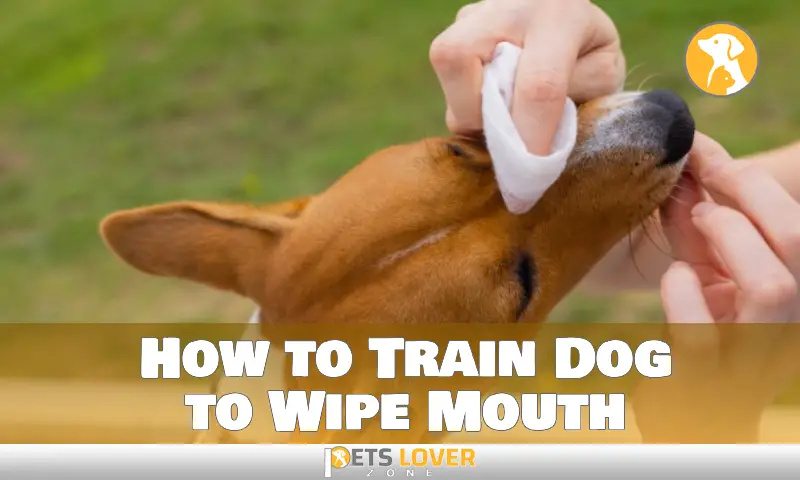A halter should not be left on a horse for an extended period. When it comes to the length of time a halter can be left on a horse, it is important to understand that it should not be worn continuously.
While a horse may wear a halter during turnout or for short periods, leaving a halter on for too long can lead to discomfort, pressure sores, or even injury. Halters are typically used for leading, tying up, or occasional handling and should be removed when not in use to ensure the horse’s safety and well-being.
It is essential to check the fit, condition, and cleanliness of a halter regularly and always use proper judgment when determining how long a horse should wear one.
The Importance Of Halter Safety For Horses
Horse halters are a commonly used tool in horsemanship, serving various purposes such as leading, tying, and restraining horses. But have you ever wondered if there is a limit to how long a horse should wear a halter? In this section, we will explore the importance of halter safety for horses and the risks associated with leaving a halter on for too long.
Understanding The Purpose And Function Of Horse Halters:
- Horse halters are essential tools used to securely hold and control horses.
- They are typically made of nylon, leather, or rope, and consist of straps and buckles to fasten around the horse’s head.
- Halters are designed to distribute pressure evenly, ensuring comfortable and safe handling of horses.
Why It Is Crucial To Pay Attention To Halter Safety:
- Horses can easily become entangled or trapped if the halter is not properly fitted or left on for extended periods.
- Neglected halters can lead to injuries, such as rub marks, sores, and even strangulation in severe cases.
- Regular inspection and maintenance of halters are essential to ensuring the horse’s well-being.
Common Risks And Dangers Associated With Leaving A Halter On For Too Long:
- Rub marks and sores: Prolonged halter use can cause friction and rub marks on the horse’s skin, which may develop into painful sores.
- Trapped or stuck: Horses can get their halters caught on fences, branches, or other objects, potentially causing severe injuries or restricting their movement.
- Strangulation: If a horse’s halter becomes tangled or caught, it can result in tragic circumstances, such as strangulation or asphyxiation.
Remember, when it comes to halter safety, it is essential to prioritize the well-being of our equine friends. By understanding the purpose and function of horse halters, being mindful of halter safety, and recognizing the risks associated with leaving a halter on for too long, we can ensure the welfare of our horses and prevent unnecessary harm.
Factors To Consider When Leaving A Halter On A Horse

Having the right equipment is essential when it comes to caring for your horse. One piece of equipment that is commonly used is the halter. But how long is it safe to leave a halter on a horse? There are a few factors to consider when making this decision, including the horse’s behavior and temperament, their living conditions and environment, and the type and fit of the halter being used.
Let’s take a closer look at each of these factors.
The Horse’S Behavior And Temperament
- Each horse is unique and may react differently to having a halter on for extended periods.
- Some horses may become agitated or restless, while others may not mind at all.
- It’s important to observe your horse’s behavior and temperament when deciding how long to leave a halter on.
- If you notice any signs of discomfort or stress, it may be best to remove the halter.
The Horse’S Living Conditions And Environment
- The living conditions of a horse can play a role in how long a halter can be left on.
- If a horse is turned out in a pasture with other horses, there is a risk of the halter getting caught on something.
- In this case, it may be safer to remove the halter when the horse is turned out.
- If the horse is in a stall or a paddock with no hazards, leaving the halter on may not pose as much of a risk.
The Type And Fit Of The Halter Being Used
- The type and fit of the halter are another important consideration.
- A well-fitting halter made of sturdy material is less likely to cause discomfort or accidents.
- It’s important to regularly check the fit of the halter to ensure it is not too tight or too loose.
- If the halter is too tight, it can rub and irritate, while a loose halter may be more likely to get snagged on something.
Remember, every horse is different, and what works for one may not work for another. It’s important to assess your horse’s behavior, living conditions, and the halter being used before deciding how long to leave it on. Regular observation and proper care will ensure the safety and well-being of your horse.
The Recommended Duration For Leaving A Halter On A Horse
Halters are essential tools for handling and managing horses. They allow us to lead, tie, and control these powerful creatures safely. But how long can you leave a halter on a horse? Finding the right balance between convenience and safety is crucial.
To shed some light on this topic, let’s explore the recommended duration for leaving a halter on a horse, based on guidelines from equine experts and professionals.
Guidelines From Equine Experts And Professionals
- Horses should not wear halters for extended periods, as it can lead to discomfort, rubbing, and potential injuries.
- The consensus among experts is that horses should have regular breaks from wearing halters to allow their skin to breathe and prevent pressure sores.
- It is recommended to remove the halter at least once every day to inspect the horse’s head, neck, and poll for any signs of irritation or rubbing.
- Some experts suggest removing the halter for a few hours each day, preferably during turnout or when the horse is in a safe and controlled environment.
- If a horse is on pasture, it is advisable to remove the halter entirely to minimize the risk of entanglement with fences or other objects.
How Often The Halter Should Be Removed And For How Long
- Halters should be removed at least once a day to allow the horse’s skin to breathe and prevent any potential discomfort or pressure sores.
- The duration of halter-free time can vary depending on the horse’s specific needs and circumstances.
- Some horses may only need a few hours of freedom each day, while others may require longer breaks.
- If the horse shows any signs of irritation or rubbing, it may be necessary to increase the frequency and duration of halter-off time.
- Always observe your horse’s behavior and well-being when determining how often and for how long to remove the halter.
Balancing Convenience And Safety When Determining Duration
- Convenience and safety should be carefully considered when deciding how long to leave a halter on a horse.
- Keeping the halter on at all times may seem convenient, especially for quick handling or tying up, but it can pose risks to the horse’s well-being.
- While it may be tempting to leave the halter on for extended periods due to ease of access, it is crucial to prioritize the horse’s comfort and minimize the potential for accidents or injuries.
- Striking a balance between convenience and safety is essential. Regularly removing the halter not only promotes the horse’s health but also reduces the risk of complications associated with prolonged halter use.
Remember, each horse is unique, and their needs may vary. Consult with a knowledgeable equine professional or veterinarian for specific guidance regarding your horse’s requirements. By following the recommended guidelines, you can ensure the well-being and comfort of your equine companion while using halters effectively.
Signs of Discomfort or Potential Issues
When it comes to keeping a halter on a horse, it’s important to be aware of any signs of discomfort or irritation that your horse may exhibit. Horses are extremely sensitive animals, and even a minor discomfort brought on by the halter, if ignored, can result in potential issues.
Here are some key points to keep in mind when checking for signs of discomfort:
- Regularly observe your horse for any behavioral changes or unusual reactions, such as excessive head tossing, rubbing their face against objects, or pawing at the ground.
- Pay close attention to their facial expressions as well. If you notice a tense or strained expression, it could be an indication of discomfort.
- Check for any signs of rubbing or chafing on the face, neck, or nose. Rub marks could be an indication that the halter is ill-fitting or causing irritation.
- Take note of any hair loss or skin sores around the areas where the halter lies, as these could be signs of prolonged pressure or friction.
- Monitor your horse’s eating and drinking habits. If they seem to struggle with chewing or drinking, it could be a sign that the halter is putting pressure on sensitive areas.
Identifying Potential Problems Such As Rub Marks Or Sores
Rub marks and sores are common issues that can arise from leaving a halter on a horse for too long. These problems can lead to discomfort, pain, and even infections if not addressed promptly. Here are some key points to help you identify potential problems:
- Inspect your horse’s face, neck, and nose regularly for any signs of rub marks or skin sores. Look for areas where the hair appears thin or discolored, or where the skin may be swollen or irritated.
- Run your hands gently along the areas where the halter sits to feel for any abnormalities. Pay attention to any lumps, bumps, or excessive heat, as these could indicate inflammation or infection.
- If you notice any redness, tenderness, or discharge around the halter area, it’s crucial to take immediate action. These could be signs of infection or other underlying issues that require veterinary attention.
The Importance Of Regular Halter Checks And Maintenance
Regular halter checks and maintenance are essential for ensuring your horse’s comfort and well-being. By implementing a routine, you can identify and address any issues before they escalate into more significant problems. Here are some key points emphasizing the importance of regular halter checks:
- Check your horse’s halter daily for any signs of wear and tear. Look for fraying, loose stitching, or stretched-out areas that could compromise the halter’s integrity.
- Make sure the halter fits properly, ensuring it is snug but not too tight. Adjust the halter accordingly as your horse grows or changes shape to prevent discomfort.
- Clean the halter regularly to remove any dirt, sweat, or debris that may accumulate. This will help prevent skin irritations and keep the halter in good condition.
- Consider rotating the halter occasionally to provide relief and prevent constant pressure in one particular area.
By being mindful of your horse’s comfort and regularly inspecting its halter, you can prevent potential issues and ensure their overall well-being. Remember, a happy and comfortable horse is a healthy horse.
Ensuring Halter Safety And Comfort For Your Horse
Halter safety and comfort are essential factors to consider when caring for your horse. It is important to choose the right type of halter and ensure proper fitting techniques to avoid any discomfort or potential harm to your equine companion.
Here are some key points to keep in mind:
Proper Fitting Techniques For Horse Halters
- The halter should fit snugly around the horse’s head without causing any rubbing or chafing.
- Ensure that there is enough space between the halter and the horse’s face, allowing them to open their mouth and breathe comfortably.
- Adjust the crownpiece and chinstrap to provide a secure fit without applying excessive pressure to sensitive areas.
- Check for any signs of redness, irritation, or hair loss, which may indicate an ill-fitting halter.
Choosing The Right Type Of Halter For Your Horse’S Needs
- Leather halters are durable and comfortable, but may require regular maintenance to keep them in good condition.
- Nylon halters are lightweight, easy to clean, and suitable for everyday use.
- Rope halters offer more control and are commonly used in groundwork and training.
- Consider your horse’s requirements, such as temperament, discipline, and sensitivity, when selecting a halter.
Tips For Monitoring And Adjusting The Halter To Avoid Discomfort
- Regularly check the fit of the halter, especially as the horse grows or gains/loses weight.
- Inspect for any signs of wear and tear, including frayed straps or broken buckles, and replace the halter if necessary.
- The horse may show signs of discomfort by rubbing, shaking its head, or showing resistance, so pay attention to how it behaves and how it moves.
- Gradually introduce your horse to wearing a halter, allowing them time to adjust and ensuring a positive association.
By following these guidelines, you can ensure that your horse’s halter fits properly, provides comfort, and promotes its overall well-being. Remember to regularly check and adjust the halter as needed to maintain your horse’s safety and happiness.
Alternatives To Leaving A Halter on A Horse

Leaving a halter on a horse for extended periods can be a matter of debate among horse owners and experts. While it can provide convenience for handling and controlling the horse, it also raises concerns about the horse’s well-being and safety.
Thankfully, there are alternatives to consider when it comes to leaving a halter on a horse. Let’s explore some temporary removal options for times when the halter is not needed and the use of breakaway or safety release halters for added safety.
Temporary Removal Options For Times When The Halter Is Not Needed:
- Remove the halter when the horse is in a secure and controlled environment, such as a stall or paddock, where it won’t be at risk of wandering off or getting into dangerous situations.
- Take off the halter during turnout or exercise sessions unless you specifically need it for control or training purposes.
- If you’re concerned about losing control of your horse during turnout, consider using a grazing muzzle instead of leaving the halter on indefinitely.
Using Breakaway Or Safety Release Halters For Added Safety:
- Choose a halter specifically designed with breakaway or safety release features to minimize the risk of injury. These halters are designed to break under pressure, allowing the horse to free itself if it gets caught on something.
- Regularly check the halter for any signs of wear and tear, and replace it if needed. Ensure that the breakaway mechanism is functioning properly.
- Keep in mind that no halter is completely foolproof, so it’s important to always supervise your horse and regularly check on them to ensure their safety.
Balancing the need for control and the horse’s well-being is essential in the decision to leave a halter on a horse. Evaluate your horse’s individual needs and circumstances, considering these alternatives to meet both control and safety requirements. Remember, the ultimate goal is to ensure the horse’s comfort, welfare, and safety.
FAQs
How Long Can You Leave A Halter On A Horse Without Causing Harm?
You should not leave a halter on a horse for extended periods, as it can cause injuries and discomfort.
Why Is It Important To Remove A Halter From A Horse?
The removal of a halter allows the horse to graze, groom, and move without any restriction or potential injury.
Can Leave A Halter On A Horse Lead To Health Issues?
Leaving a halter on a horse can create sores, rub marks, and even halt blood circulation, causing serious health concerns.
How Often Should You Remove And Inspect The Halter?
It is recommended to remove and inspect the halter daily to ensure a proper fit and prevent any potential issues.
Conclusion
It is crucial to consider the well-being and safety of horses when deciding how long to leave a halter on them. While halters serve important purposes, such as leading and tying, they should not be left on for extended periods.
Leaving a halter on for too long can cause discomfort, skin irritations, and potential injuries. It is recommended to remove the halter when the horse is in a safe and supervised environment. Additionally, regularly checking the condition and fit of the halter is essential to ensure it does not become too tight or cause discomfort.
Proper care and attention to the horse’s needs are vital for maintaining their overall health and well-being. By following these guidelines, horse owners can ensure the comfort and safety of their equine companions while using halters appropriately.






